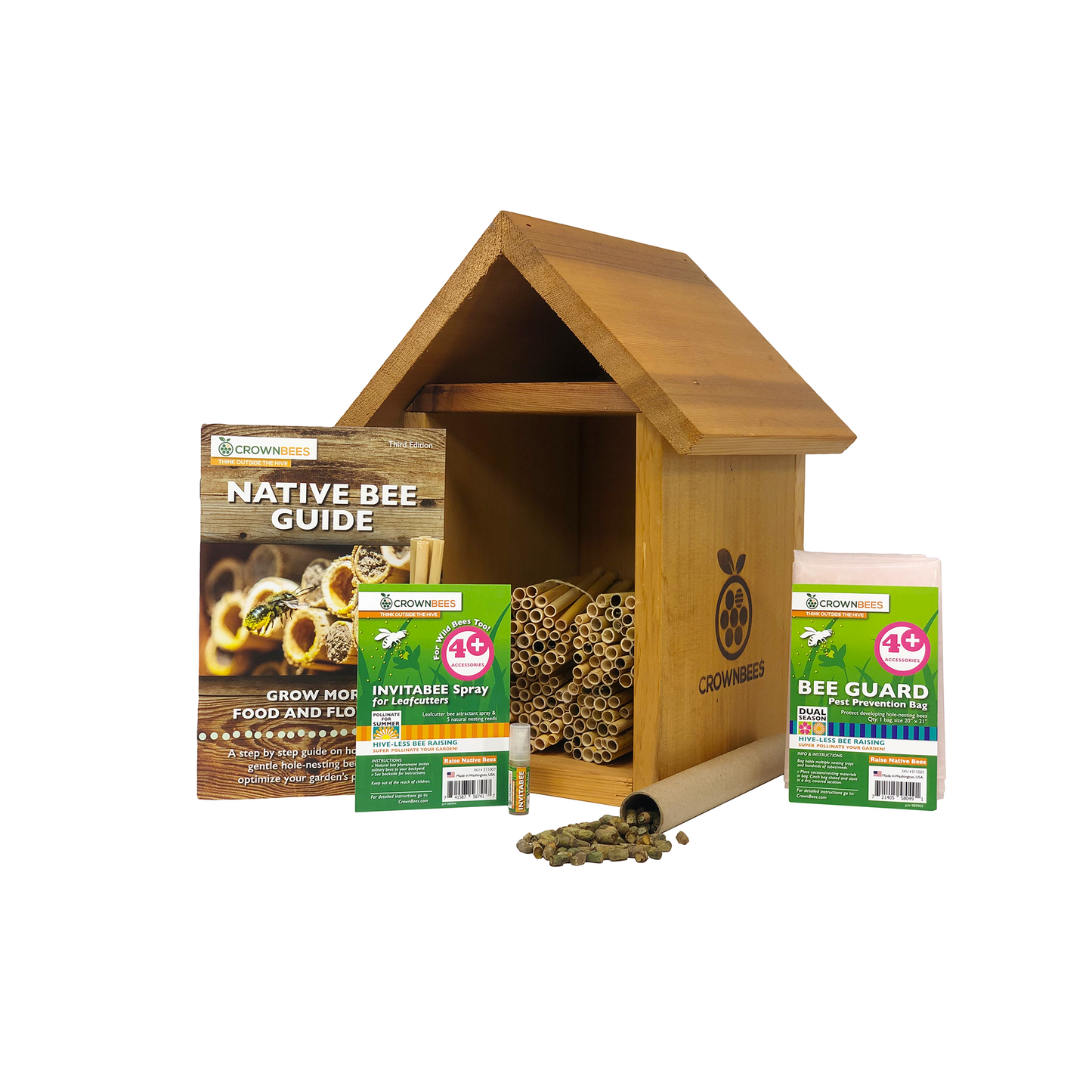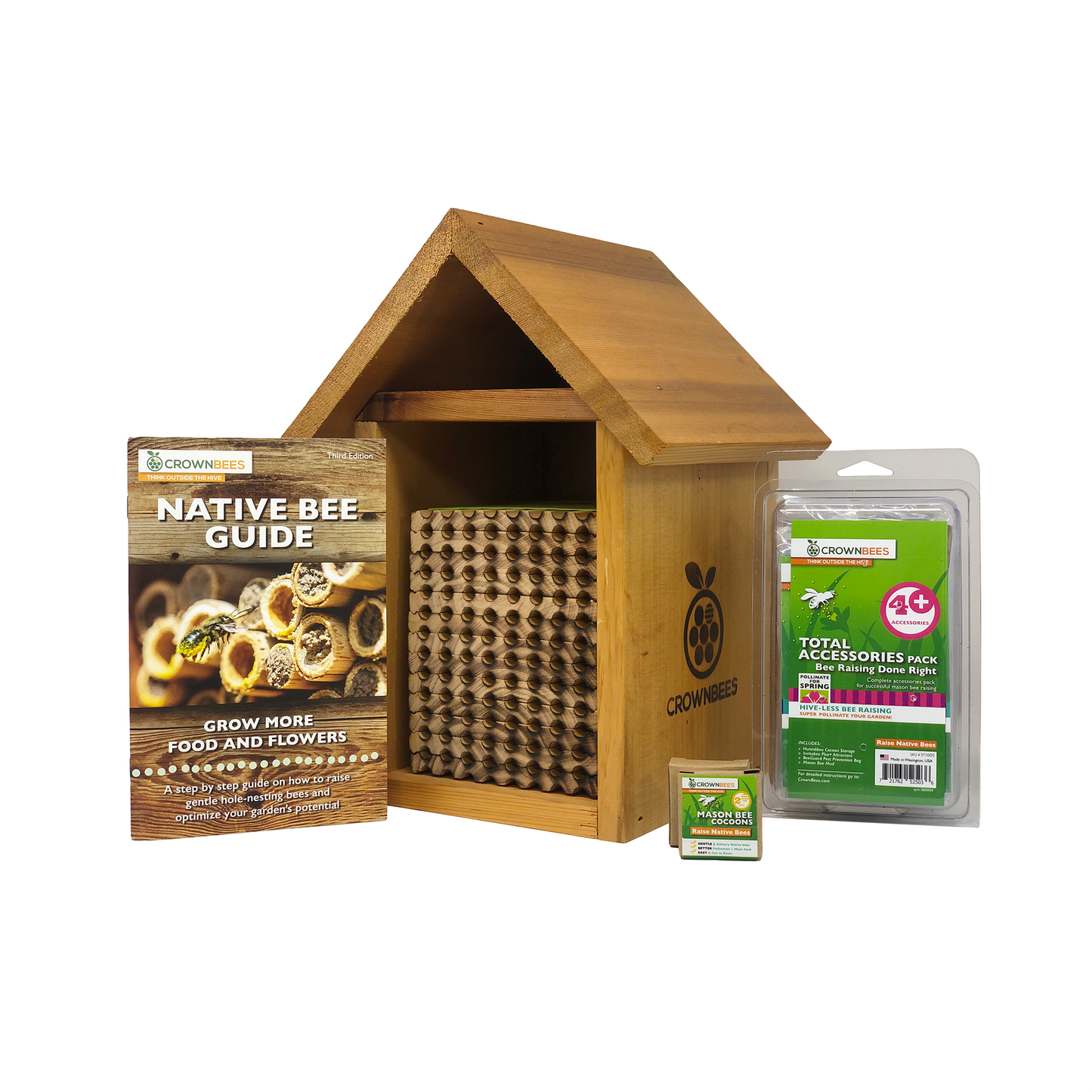
Lately, we've had many of our bee raisers ask us about the causes of global bee declines and what they can do to help prevent further declines. First of all, thank you! Thank you for taking notice and action on this critical issue!
While the decline of European honey bees worldwide has been well documented, the more than 20,000 species of native bees and other insects have been largely ignored. Recently, researchers have focused their efforts on finding evidence of declines and highlighting the major causes and solutions for these declines. Perhaps equally important, you have begun to take notice and ask whether a pollinator crisis is on the horizon.
So, let's start with what we know about insect declines. These are by no means exhaustive lists, but they signal the importance and evidence of the problem.
Insects are often overlooked but have significant global importance:
- Insects create the biological foundation for all terrestrial ecosystems.
- Insect services provide 70 billion dollars a year in economic services in the U.S. alone.
- 85% of flowering plants require an animal for pollination. Insects make up this majority. Some scientists estimate that one in every three bites of food we eat is thanks to animal pollinators.

Evidence for Decline of Insect Species:
- The rusty patch bumble bee has declined by 87% in the last 20 years. It is the first bee to be protected under the Endangered Species Act.
- Nearly 1 in 4 North American native bee species is at increasing risk of extinction.
- 19% of our butterfly species are at risk of extinction in North America. 40% of insect pollinators globally are highly threatened.So, what are the leading causes of decline?

So, What are the main causes of decline?
There is no single overriding cause of insect declines. Scientists cite many factors in the sharp decline of the world's insect populations, and many of these factors interact, causing even greater pressure on vulnerable populations. This blog highlights 5 of the major causes of global insect decline and a few simple actions that individuals can take to save insects from even greater declines in the future.
1. Habitat Loss and Degradation
Changes in land use, including urbanization, industrial agriculture practices, and degradation of existing habitat from pollution and invasive species, are widely considered to be the most influential factor in global insect declines. A meta-analysis of 73 studies found that industrial farming practices driving habitat loss and extensive use of pesticides and fertilizers are associated with 47 percent of reported declines.

2. The Ubiquitous use of Pesticides
Pesticide use has risen 5x since 1950, with over four million tons used on fields globally each year. Pesticides are highly mobile and leach into our water, travel long distances in the wind, and absorb into plants' pollen. While pesticide use on farms is a huge part of the problem, we can't solely blame agriculture. Our use of pesticides for mosquito management and quest for the "perfect" lawn and garden also contribute to the pesticide problem.

3. Invasive Species and Disease
Global trade or management of plants and animals (both purposeful and accidental) moves pathogens around to new regions - often with devastating consequences. For example, wild bumble bees are in global decline. One cause is pathogen spillover from managed honey bees or commercial colonies of bumble bees. While managed pollinators are essential for global food production, there is a need for increased pathogen control in managed bee species to maintain native populations of pollinators. Another example is the Asian Lady Beetle, introduced by the USDA as a biological control of aphids in agricultural settings; the Asian Lady Beetle contains tiny fungus-like parasites that infect and kill native species and compete for food sources.

4. Climate Change
As seasons shift around the world due to climate change, many of our species cannot adapt and evolve fast enough to survive. For example, scientists are finding that changes in climate are beginning to influence bee nesting behavior and emergence times. For many bees, the timing of emergence coincides with spring flowering plants. If this timing is out of sync, the bees cannot collect pollen and nectar to produce offspring, and the flowers will not be pollinated by the bees. Additionally, bees are highly susceptible to certain mites and parasites, which have increased with the warmer average temperatures in certain areas.

5. Pollution
Chemical, light, and sound pollution of water, air, and soil impacts plants and animal life globally. Light pollution is a significant but overlooked factor in insect declines, especially in many of our night-flying species, such as fireflies and moths.

So, what can I do to help protect our insect populations?
The great news is that there are many simple actions that we can take to save insects from projected declines.
- The power of the "messy" lawn. Most insects are tiny and don't need much space to survive. Allowing nature to take back a bit of your lawn and garden can significantly contribute to insect conservation.
- Plant native plants! Native plants provide nectar, pollen, and seeds that serve as food for native insects and other animals. Non-natives do not always provide the necessary nutrients for our native insects. A bonus, native plants are also more resistant to insects and diseases, so they are less likely to need pesticides!

- Reduce pesticides. Embrace the natural look of the un-manicured lawn. If mosquitoes are an issue, try non-chemical methods like removing standing water and planting natural mosquito repellent plants, such as sweetgrass. A shameless plug for our local PNW area, check out the City of Seattle's guide to natural pest, weed, and disease control.
- Buy organic and third-party certified products. Buying organic and third-party certified products is a great way to vote with our wallets. Organic farming uses far fewer pesticides and heavy metals in its farming practices. Plus, there are some tremendous science-backed health benefits of eating organic.

- Be an advocate for change and vote. Policy-makers will only adopt insect-friendly policies if we, the voters, demand change. Political advocacy, especially at the local level, can significantly advance insect conservation. I understand the challenges of engaging with policy-makers. It can be intimidating, and you might not feel heard, but it is so important! The Sierra Club has created an excellent Toolkit for engaging policy-makers. Check it out here!
- Share your knowledge and love for insects! Engaging other people with the issues is a powerful means for increasing awareness and appreciation of insects, especially when talking to kids! A great way to get kids involved is to build a bee hotel! Solitary bees are gentle and fun to watch, making them great learning tools for kids.
All people can be part of the solution! Every day we make decisions that impact the planet. Avoiding some behaviors or adopting others can contribute both directly and indirectly to insect conservation. And remember, however large or small, take actions that address climate change. Climate change is one of the main factors driving global plant and animal extinctions, and therefore any efforts to reduce our carbon footprint make a positive impact.


